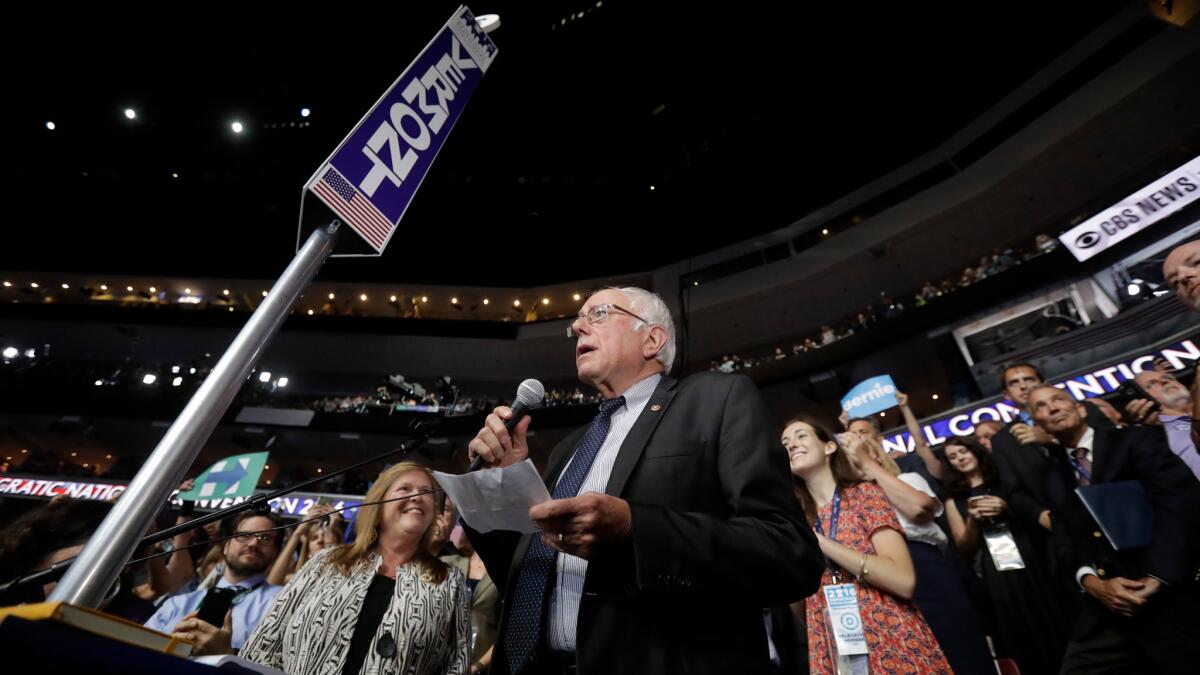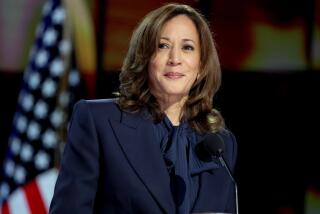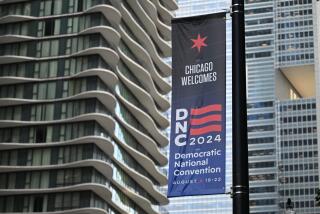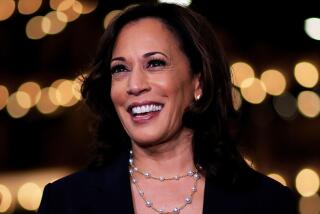Column: Welcome to the Democratic Party, Bernie

After 44 years in politics, Bernie Sanders has finally taken the plunge. Heâs a regular Democrat now.
Of course, he doesnât quite want to admit it. âI was elected as an independent, so Iâll stay [in the Senate] two more years as an independent,â he told reporters Tuesday. Indeed, he still wishes it were possible to organize an independent leftist party in the United States, the way European countries do. âWe donât have that,â he said a little mournfully.
But after decades of agitation as an outsider, heâs decided the best way to pursue his âpolitical revolutionâ is to campaign for a ticket he doesnât like very much. And thatâs pretty much the definition of a party regular: Someone who works for candidates he disagrees with â as long as they carry the right label and the disagreements arenât too wide.
Sanders didnât merely endorse Hillary Clinton in his stem-winding speech at the Democratic National Convention on Monday evening; he endorsed her wholeheartedly.
âI am proud to stand with Hillary Clinton,â he said. âAny objective observer will conclude that â based on her ideas and her leadership â Hillary Clinton must become the next president of the United States.â
He pleaded with his die-hard supporters to join him, and he promised to work not only for the presidential ticket, but also for Democrats running for Congress, state legislatures and local offices.
âI support Democrats,â he said.
His âmain role,â he added, will be âto make the Democratic Party a 50-state party.â
Clinton campaign chairman John Podesta said heâs delighted that Sanders is on the team. âHe can go campaign for us in any of the battleground states,â Podesta said, noting that Sanders had energized millions of young voters who still havenât warmed to the nominee. Sanders could be especially helpful in the swing states he won during the primaries, such as New Hampshire and Wisconsin.
Sanders has supported Democratic presidential candidates before, going back to Walter Mondale in 1984. But that was mostly a low-key affair in his home state of Vermont. This time, heâs talking about a much more visible national role, closely coordinated with Clintonâs campaign.
Sanders is also launching a new organization, Our Revolution, to continue pushing the Democratic Party to the left. But itâll be a little less revolutionary than it sounds. Its heart will be a very traditional political activity: fundraising. Thatâs right: Sanders will put his enormous list of donors to work for Democrats â OK, progressive Democrats â at every level around the country.
For decades, leftists in American politics have had a prickly relationship with the Democrats â sometimes working within the party (as in the 1972 George McGovern campaign), sometimes breaking with it, sometimes forming third parties or independent organizing committees.
Sanders is a part of that history; when he began running for office, in 1972, it was as a candidate of Vermontâs almost-forgotten Liberty Union Party. He regularly denounced Democrats as sellouts to a corrupt political system. Even as a candidate for the Democratic presidential nomination, he was initially reluctant to embrace the party label.
But Sanders isnât really betraying his past, or his supporters. Heâs willing to join the dark side now because itâs not so dark (to progressives) anymore; in fact, itâs downright hospitable for small-d democratic socialists.
Democratic voters arenât what they used to be: In 2000, the Pew Research Center reported recently, only 27% of Democratic voters described themselves as liberal; now that number is 41%.
Case in point: the first President Clinton, Bill, was a champion of business-friendly free trade agreements like NAFTA. If thereâs a second President Clinton, sheâll be a self-proclaimed skeptic on trade.
In other words, just as the Republican Party has become more conservative, so too have the Democrats become more progressive. (Sandersâ success is proof of that.)
The party apparatus isnât what it used to be, either. Sanders was right when he said the Democratic Party platform is the most progressive one ever. He and his supporters were able to push Clinton to the left on several major issues: a pledge to make public universities tuition-free for most students, a promise to raise Social Security benefits, and opposition to the current version of President Obamaâs proposed trade agreement with Asia, the Trans-Pacific Partnership.
Sanders didnât win the nomination; he didnât even come very close. But over the course of the competition, he became a Democrat â functionally, if not yet in his own self-image. More important, the Democratic Party became more like him.
Twitter: @DoyleMcManus
Follow the Opinion section on Twitter @latimesopinion and Facebook
More to Read
A cure for the common opinion
Get thought-provoking perspectives with our weekly newsletter.
You may occasionally receive promotional content from the Los Angeles Times.











